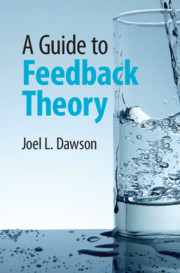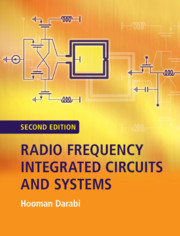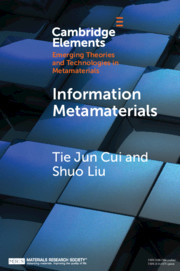Refine search
Actions for selected content:
1562 results in RF and microwave engineering
4 - Some Common Loose Ends
-
- Book:
- A Guide to Feedback Theory
- Published online:
- 09 April 2021
- Print publication:
- 22 April 2021, pp 147-171
-
- Chapter
- Export citation
6 - Conclusion and Further Reading
-
- Book:
- A Guide to Feedback Theory
- Published online:
- 09 April 2021
- Print publication:
- 22 April 2021, pp 181-182
-
- Chapter
- Export citation
Dedication
-
- Book:
- A Guide to Feedback Theory
- Published online:
- 09 April 2021
- Print publication:
- 22 April 2021, pp v-vi
-
- Chapter
- Export citation
1 - Linear Systems: What You Missed the First Time
-
- Book:
- A Guide to Feedback Theory
- Published online:
- 09 April 2021
- Print publication:
- 22 April 2021, pp 1-51
-
- Chapter
- Export citation
Acknowledgements
-
- Book:
- A Guide to Feedback Theory
- Published online:
- 09 April 2021
- Print publication:
- 22 April 2021, pp xiii-xiv
-
- Chapter
- Export citation

A Guide to Feedback Theory
-
- Published online:
- 09 April 2021
- Print publication:
- 22 April 2021

Radio Frequency Integrated Circuits and Systems
-
- Published online:
- 01 April 2021
- Print publication:
- 12 March 2020
-
- Textbook
- Export citation

Information Metamaterials
-
- Published online:
- 23 January 2021
- Print publication:
- 18 February 2021
-
- Element
- Export citation
6 - Wireless Power Transmission
-
- Book:
- Energy Harvesting
- Published online:
- 07 January 2021
- Print publication:
- 21 January 2021, pp 75-109
-
- Chapter
- Export citation
3 - Solar (Light) Energy Harvesting
-
- Book:
- Energy Harvesting
- Published online:
- 07 January 2021
- Print publication:
- 21 January 2021, pp 21-43
-
- Chapter
- Export citation
References
-
- Book:
- Energy Harvesting
- Published online:
- 07 January 2021
- Print publication:
- 21 January 2021, pp 175-193
-
- Chapter
- Export citation
7 - Electromagnetic Energy Harvesting
-
- Book:
- Energy Harvesting
- Published online:
- 07 January 2021
- Print publication:
- 21 January 2021, pp 110-141
-
- Chapter
- Export citation
Contents
-
- Book:
- Energy Harvesting
- Published online:
- 07 January 2021
- Print publication:
- 21 January 2021, pp vii-x
-
- Chapter
- Export citation
Preface
-
- Book:
- Energy Harvesting
- Published online:
- 07 January 2021
- Print publication:
- 21 January 2021, pp xi-xii
-
- Chapter
- Export citation
Dedication
-
- Book:
- Energy Harvesting
- Published online:
- 07 January 2021
- Print publication:
- 21 January 2021, pp v-vi
-
- Chapter
- Export citation
9 - A System Perspective
-
- Book:
- Energy Harvesting
- Published online:
- 07 January 2021
- Print publication:
- 21 January 2021, pp 163-174
-
- Chapter
- Export citation
Index
-
- Book:
- Energy Harvesting
- Published online:
- 07 January 2021
- Print publication:
- 21 January 2021, pp 194-196
-
- Chapter
- Export citation
2 - 2D-3D Integration for Autonomous Sensors
-
- Book:
- Energy Harvesting
- Published online:
- 07 January 2021
- Print publication:
- 21 January 2021, pp 5-20
-
- Chapter
- Export citation
8 - Power Supplies and Storage
-
- Book:
- Energy Harvesting
- Published online:
- 07 January 2021
- Print publication:
- 21 January 2021, pp 142-162
-
- Chapter
- Export citation
5 - Thermal Energy Harvesting
-
- Book:
- Energy Harvesting
- Published online:
- 07 January 2021
- Print publication:
- 21 January 2021, pp 58-74
-
- Chapter
- Export citation
